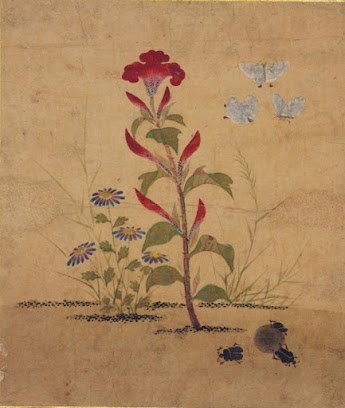Search This Blog
Introducing beautiful pictures of Korea. Among them, we introduce court decoration paintings, which were mainly used as decorations in the court, and folk paintings containing the dream, hopes, and love of the people.
Featured
- Get link
- X
- Other Apps
Chochung-Do (plants and insects)
Hwajo-Do is mainly drawn with flowers and birds, Chochung-Do is mainly drawn with flowers and insects such as bees and butterflies.
Chochung-Do by Shin,Saimdang (1504~1551), a Joseon female painter, is famous.
There is a painter Jeong, Seon(1676~1759) who is famous for his true-view landscape during the Joseon Dynasty. I will also write the story of Jeong, Seon in detain in this Blog.

A pair of field mice are stealing and eating a large watermelon. Jeong, Seon's amazing power of observation can be seen in the depiction of the field mouse as if it were alive, Indigo plant with red leaves and blue moonflower are drawn to add variety.
Red dianthus flower are blooming in the cucumber field in midsummer, and a frog is looking up at a fluttering butterfly next to a large cucumber. The dark green of the cucumber and frog and the red of the dianthus create a contrast yet match each other, it is a lovely picture.
Minhwa was painted by depicting the wonderful paintings of these artists as they are.
( Ahn, Eun J. 2019)
( Ahn, Eun J. 2019)
- Get link
- X
- Other Apps




.jpg)







